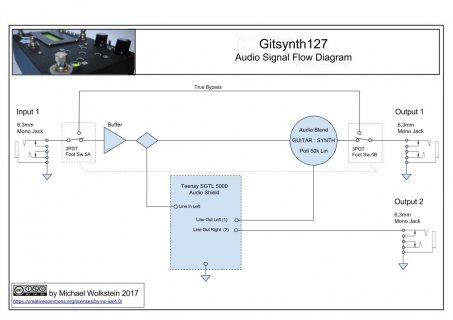SparkFun has the breadboard-like pedal kit, but that doesn't seem to give any respects to proper ground planes for the low-level instrument signals.
The "Audio Board" has a nice ADC / DAC, but works on "line level" which is > 10x higher voltage than comes out of a guitar.
Anything else out there seems to be made for putting some BJT transistors in and making fuzz.
I can make a board with some op amps and the proper I/O, as well as the necessary robust foot switch and knobs, and even some kind of enclosure. But it'd be so nice if I didn't have to. And if I do, I'd almost certainly end up integrating the ADC/DAC onto that board, rather than having to stack three boards tall just to get where I want to go ...
The "Audio Board" has a nice ADC / DAC, but works on "line level" which is > 10x higher voltage than comes out of a guitar.
Anything else out there seems to be made for putting some BJT transistors in and making fuzz.
I can make a board with some op amps and the proper I/O, as well as the necessary robust foot switch and knobs, and even some kind of enclosure. But it'd be so nice if I didn't have to. And if I do, I'd almost certainly end up integrating the ADC/DAC onto that board, rather than having to stack three boards tall just to get where I want to go ...



